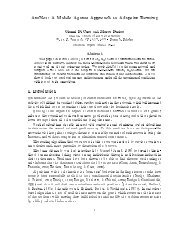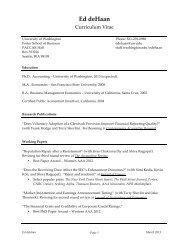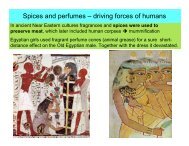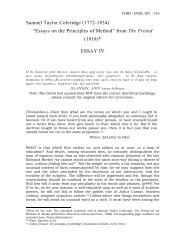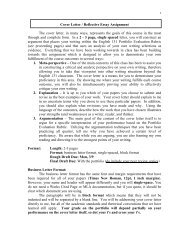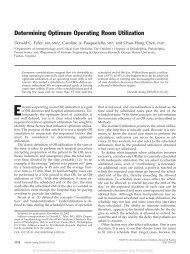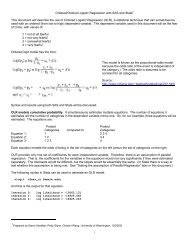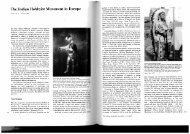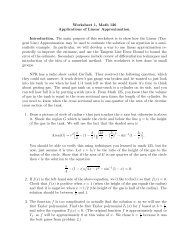The Lasting Presence of Gerard's Herball
The Lasting Presence of Gerard's Herball
The Lasting Presence of Gerard's Herball
You also want an ePaper? Increase the reach of your titles
YUMPU automatically turns print PDFs into web optimized ePapers that Google loves.
intimate knowledge <strong>of</strong> the plants. At the same time, according to Arber (1953), in<br />
antiquity “…herb gatherers evidently aimed at creating a monopoly by fencing their craft<br />
about with all manner <strong>of</strong> superstitions handed down by word <strong>of</strong> mouth, most <strong>of</strong> which<br />
[warned] that herb collecting was too complicated and dangerous a pursuit for the<br />
uninitiated” (p.7). Throughout its history, the herbal has included a mix <strong>of</strong> myth, fantasy,<br />
and fact.<br />
In many ways, Gerard’s <strong>Herball</strong> sits at a meeting place between the paths described<br />
above. In this section and the next, I explore the ways in which botanists affected change<br />
in the <strong>Herball</strong> and suggest that the <strong>Herball</strong> in turn gave a nudge to botanists.<br />
Gunther (1922) notes that the 1597 edition <strong>of</strong> Gerard’s <strong>Herball</strong> was problematic from<br />
a botanical point <strong>of</strong> view. Botanists at the time were interested in scientific accuracy, and<br />
while Gerard’s work was popular, the woodcuts and descriptions were not always<br />
properly matched. In addition, the woodcuts were from Christophe Plantin’s famous<br />
collection in Belgium, created in the 16 th century and used to illustrate the herbals <strong>of</strong><br />
l’Obel, Dodoens, and de l’Ecluse (Arber, 1953). Gerard’s text, recall, is largely a<br />
translation <strong>of</strong> Dodoens’ work. Thus, comprised <strong>of</strong> woodcuts and descriptions <strong>of</strong> plants<br />
from other places, the <strong>Herball</strong> <strong>of</strong> 1597 was not necessarily useful for identifying plants in<br />
England. Both John Goodyer and Thomas Johnson left their own gardens to look at<br />
native plants growing wild. Goodyer, who contributed plant descriptions and names to<br />
the revised edition <strong>of</strong> Gerard’s work, placed important emphasis on the locations and<br />
proper identifying characteristics <strong>of</strong> plants found in England. Gunther (1922) points to<br />
the notes Goodyer sent to Johnson as examples <strong>of</strong> Goodyer’s attention to detail.<br />
6



